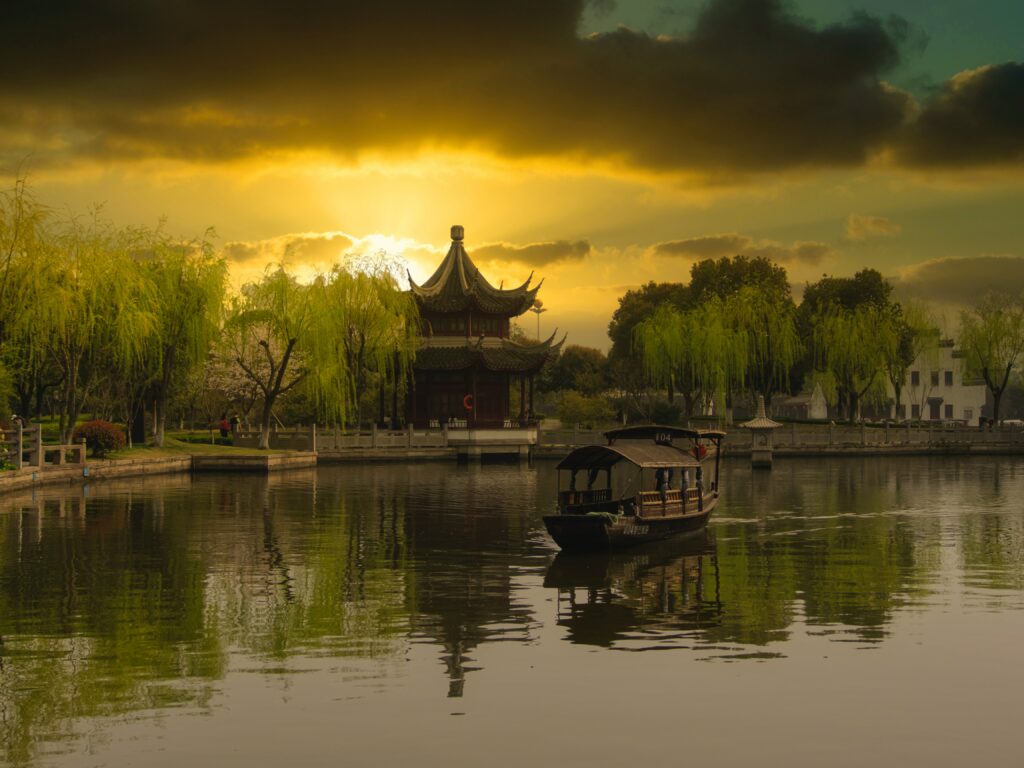
China has a fascinating history, as well as a rich culture, heritage, and architecture. China has long been a major force in Asia, and Chinese civilization is one of the world’s oldest civilizations. The title “Ancient Chinese civilization” refers to the period of Chinese history that spans from the late 2nd century BCE, when the first literate, city-based culture emerged, through the end of the reign of the Han dynasty in 220 CE.
Ancient China’s history can be traced back up to 4000 years. Some early human species, such as the homo Erectus, settled in China around 2 million years ago during the paleolithic era; the pre-humans who settled in China evolved differently than their counterparts in Africa. The proto-Chinese agriculture dated approximately 7000 BC as per archeologic evidence. Agriculture was the primary reason for Chinese cultural development.
The Start of Civilization
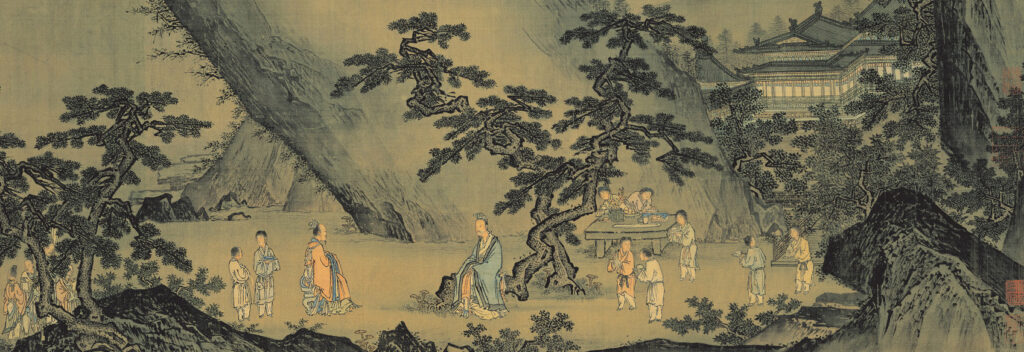
As mentioned, farming played a significant role in the development of Chinese civilization. Due to the fertile land around the Yellow River, many people started to settle around the banks of the river, thus forming small villages. Throughout 5000-3000 BC, many communities flourished and expanded through the Yellow River, which gave rise to different cultures. Yangshao (仰韶) culture was formed around the regions of the Yellow River, which was then overthrown by the Longshan (龙山) culture.
Bronze Age in China

Chinese people soon learned to mix the heating metal of tin and copper, forming the metal bronze, thus giving rise to the Bronze age. Rulers and emperors arose during the bronze age, which began approximately 2000 BCE. The Yellow Emperor was considered the father of the Chinese people. He ruled sometime between 2700 and 2600 BCE when the Chinese people moved from a nomadic lifestyle to permanent villages and cities with a hierarchy of rulers. The Yellow emperor’s long reign was also when the Chinese people developed writing mathematics and a calendar method.
Yu the Great (大禹, Dà Yǔ), who ruled the kingdom between 2200 and 2100 BCE, earned his place on the throne by planning and supervising the construction of a system of dams and canals that relieved seasonal flooding and irrigated farm areas. As ruler of Yu, the great ordered the construction of roads developed trading routes and merged various tribes into one. His modernization initiatives have served to advance the Chinese culture by establishing the foundation for the coming great Chinese dynasties.
The Mandate of Heaven

The title “Son of Heaven” was given to Chinese kings. They believed they were Heaven’s representatives on earth. Emperors were revered as divine figures, and disobeying them was equivalent to disobeying Heaven.
The “Son of Heaven” concept was intimately tied to the “Mandate of Heaven,” a powerful idea in Chinese history. A dynasty was granted divine authority to govern as a result of this. However, it was thought that emperors who ruled unfairly or unjustly risked losing their dynasty’s mandate. In these conditions, it was permissible for rebels to seek to replace the dynasty with a new one, which had successfully gained the throne and therefore proven that it now enjoyed the favor of Heaven.
Dynasties of China
1. Shang dynasty
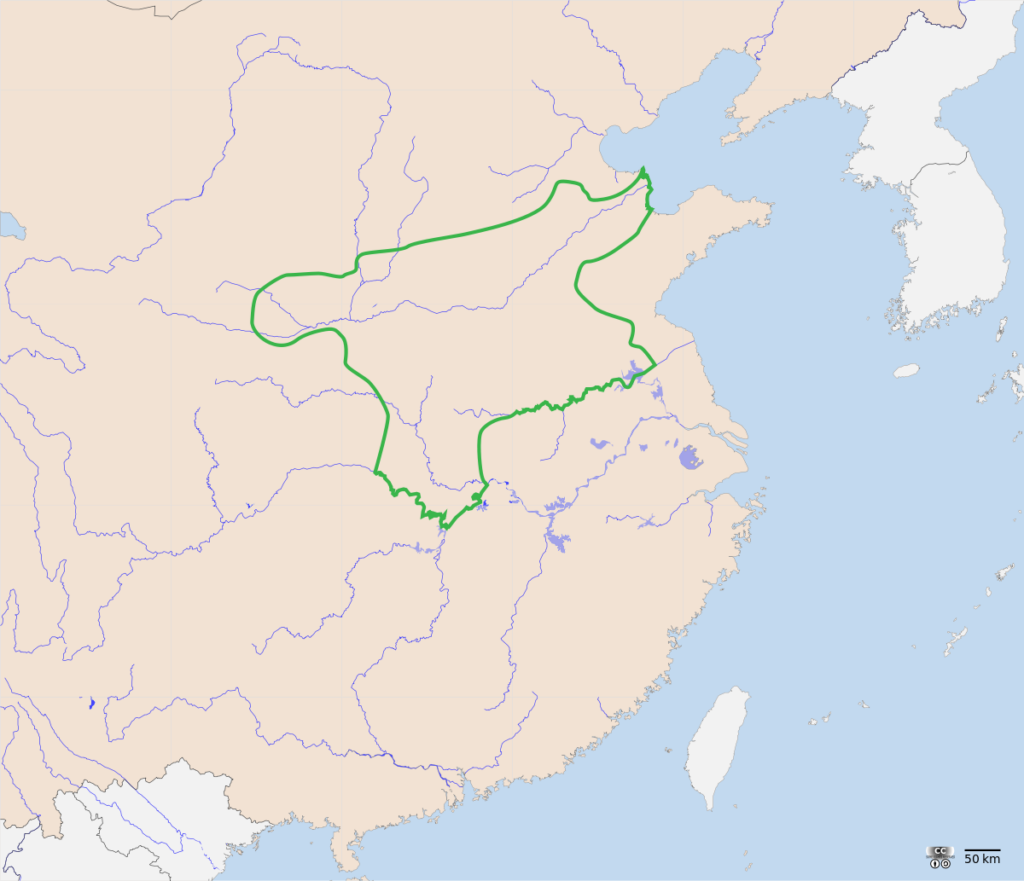
With further growth in the bronze age and urbanization, the Shang dynasty (商朝, Shāng Cháo) brought a fundamental change to Chinese culture. During the Shang era, Chinese artisans created some of the most beautiful bronzes in history. The Shang dynasty is known for its advancements in art, writing, and calendar keeping. As per ancient Chinese mythology, Tang, the king of the Shang dynasty, was the descendant of the sage king, ‘ The Yellow emperor.’ Tang overthrew the ruler of the Xia dynasty and formed the Shang dynasty around 1600 BC.
During the rule of King Tang, taxes were reduced, and more freedom was granted to the peasants. He extended the dynasty in the central and the lower Yellow River Basin regions. Tang stood like a king of people and thus gained a reputation and tremendous respect among people. Due to his work, Tang is considered to be one of the Greatest Kings of Ancient China. After the death of King Tang, the dynasty suffered years of instability and chaos.
2. Zhou dynasty
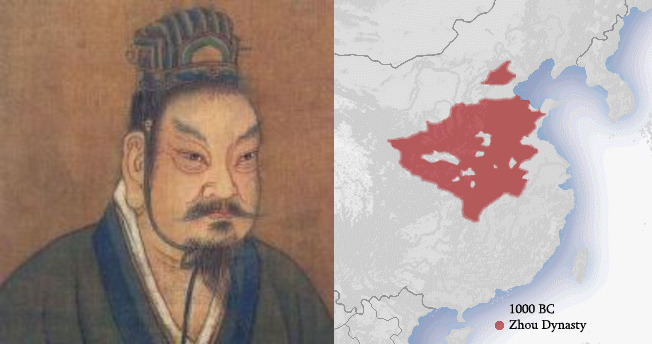
After Defeating the Shang dynasty in the Battle of Muye, the Zhou dynasty (周朝, Zhōu Cháo) ruled china for the next eight centuries. The Zhou dynasty ruled China for the longest amount of time and witness the cultural awakening of China.
Many agricultural advancements were developed during this period, including the iron plough and the construction of canals and other waterways to bring farm crops to market. During the Zhou dynasty, bronze and iron coins were introduced, and the Chinese writing system was developed. Medical innovations included grouping physicians by their specialities and collecting medical records on patient’s inventors
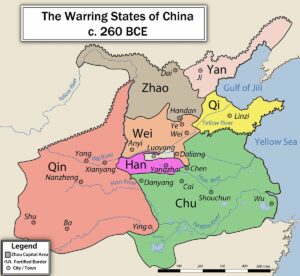
Many small states began to revolt against the ruler during the Zhou dynasty and were termed “Warning states.” As a result, China disintegrated into several small states, which continued to struggle for several years.
Imperial China
The final period of ancient The last period of ancient China was the formation of powerful centralized states that brought the Chinese people together under the imperial dynasty. Imperial China is the most prolonged period in ancient Chinese history, beginning from 221BC and extending to 1912. After the Zhou dynasty, the formation of Warning states gave rise to instability and violence all over china.
1. Qin dynasty
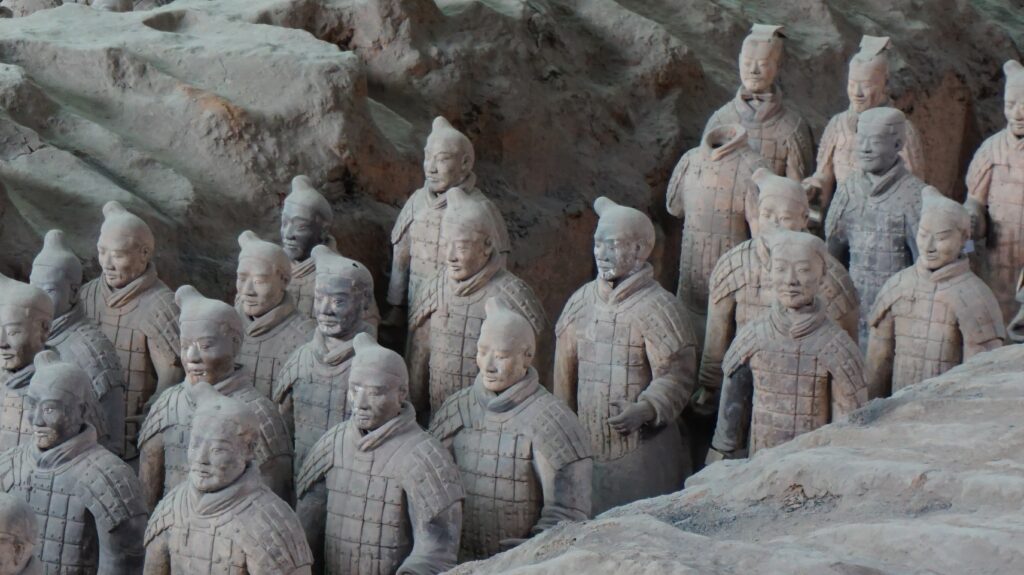
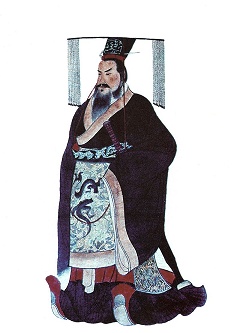
The Qin dynasty (秦朝, Qín Cháo) unified the entire china into one nation under its rule. Thus the ruler of the Qin dynasty, Qin Shi Huang (秦始皇), was the first emperor of China. For the first time in history, China was ruled by a single emperor who had control over the entire china. The Qin dynasty has been known for its rigid unity in China’s society and the construction of the early version of the Great Wall of China. But the same rigour of the Qin government made this a short-lived dynasty and soon, due to internal religious conflicts and exploitation of poor peasants, put an end to the Qin dynasty.
2. The Han dynasty
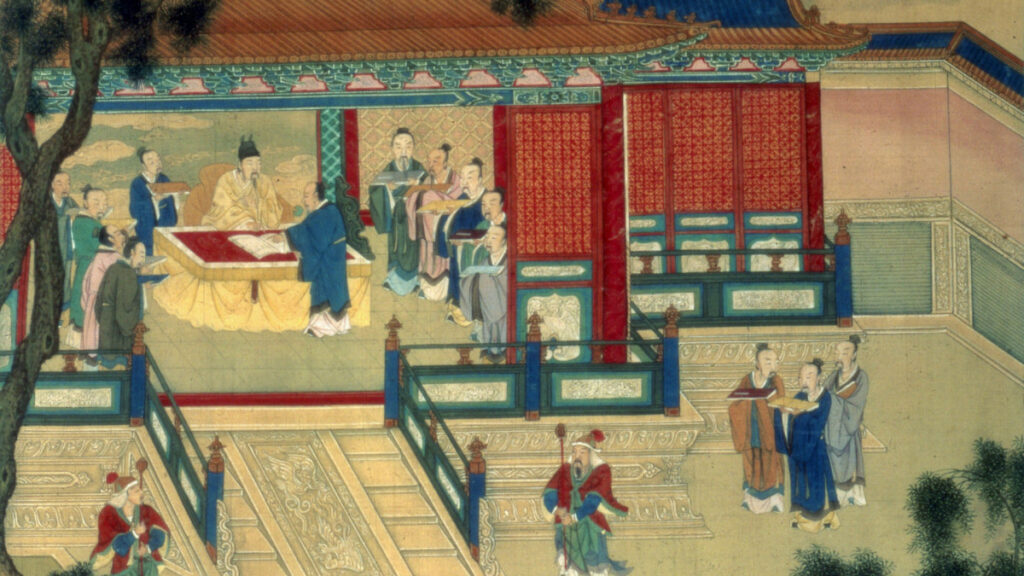
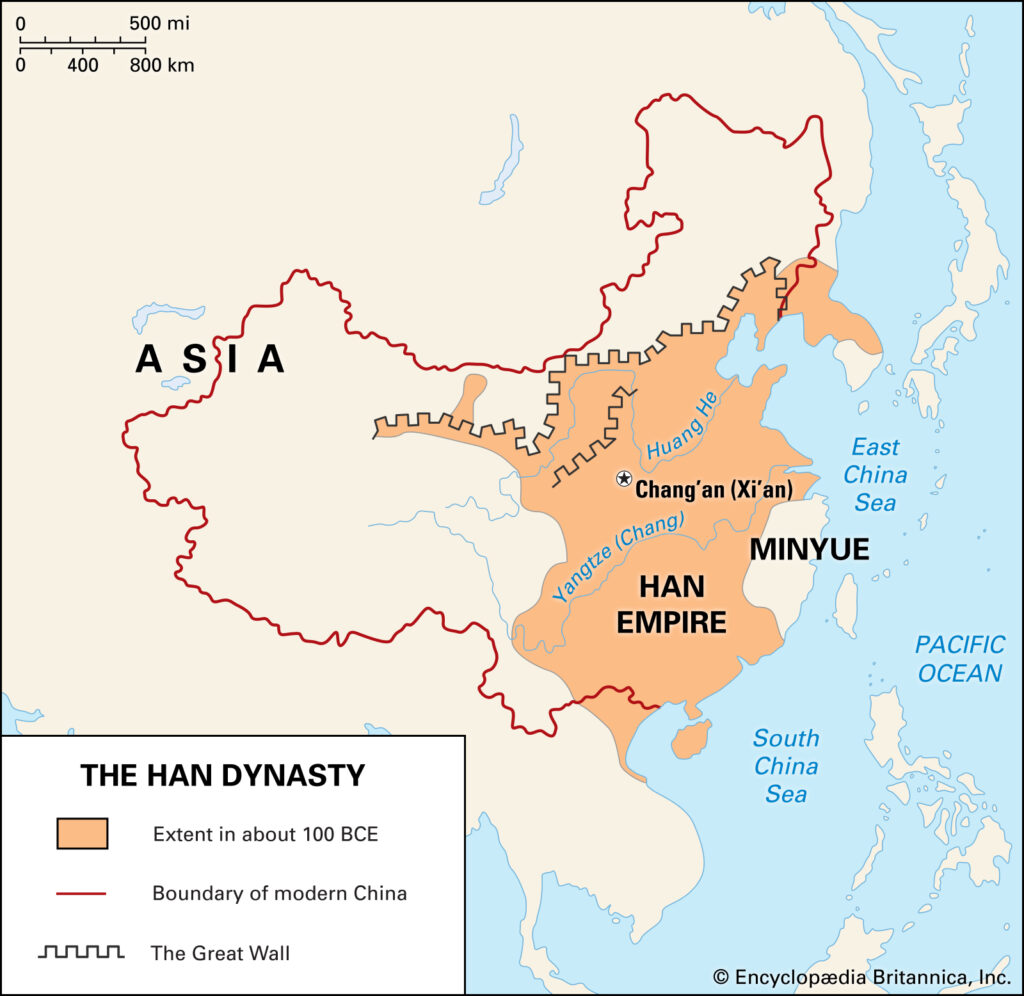
The next Unifying dynasty to rule China is the Han dynasty (漢朝, Hàn Cháo); it brings the most significant changes to Chinese culture in history. The Han dynasty ruled china from 202 BC to 220 AD. Many historians believe the Han dynasty was responsible for bringing the Chinese people together as One Nation, One ruler. This was a period of administrative stability and artistic, scientific, and religious progress. The land captured by the Han dynasty during the ancient era makes up the majority of modern-day China. The acceptance of Confucianism, which was developed by Master Kong, also known as Confucius, was one of the most significant movements of the Han dynasty. Confucianism soon became the ruling ideology of China.
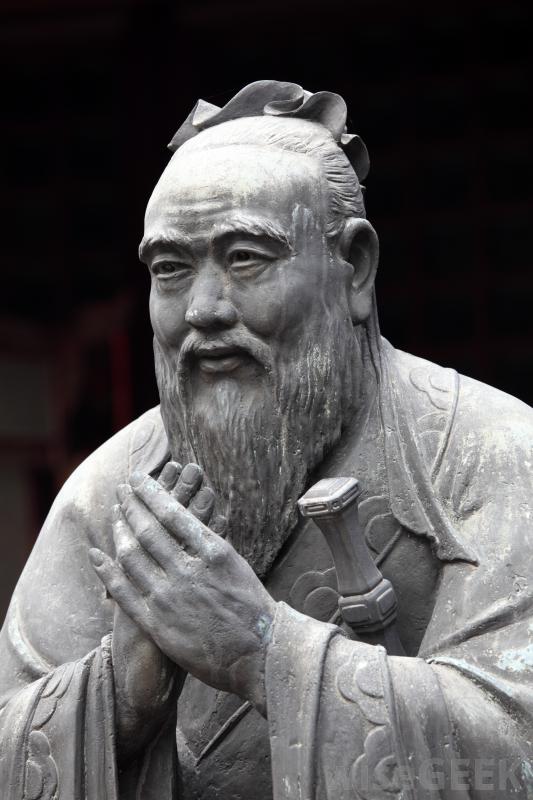
Confucianism taught the Chinese people that humans were the masters of their fates and might learn and better themselves to achieve enlightenment, emphasizing moral accuracy, self-improvement, and communal loyalty. People began to promote and concentrate on science and mathematics as a result of Confucianism’s ideology.
The End of Ancient China

During the rule of the Han dynasty, important trade routes were established, such as the Silk Road, bringing the People of China in contact with foreign traders as far as Germany and Rome. Due to inter-conflicts and instability among the rulers, the Han dynasty ended in 220 AD and was divided into small states. As a result, China entered a period of weakness, during which no single dynasty was able to dominate the entire country for several centuries. Non-Chinese people from the surrounding regions, such as the Japanese, were able to establish their states within China due to this.
By the end of the Han dynasty, the era of Ancient China also came to an end, and the age of modernization started.





Add comment